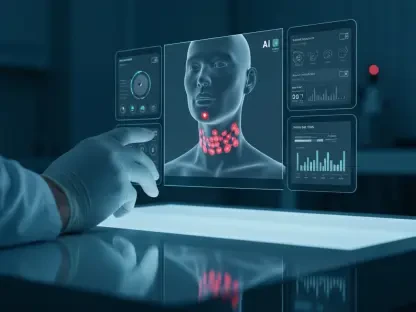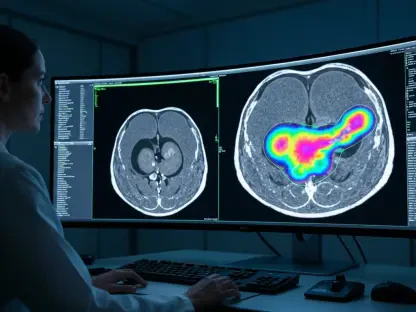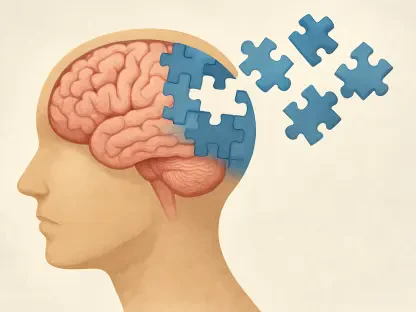Misdiagnosis is a problem facing medicine today. A significant reason for this challenge is that many diseases overlap and present similar symptoms, making it difficult to accurately differentiate them. Enter nanomaterials with their unique properties, offering a revolutionary approach to treating illnesses.
Nanotechnology is a growing field in healthcare. Increasing advancements in nanomaterials drive expansion in medical service delivery, diagnostics, and regenerative healthcare. This coincides with the nanodevice market size, which is expected to increase from the reported $5.6 billion in 2023 to $13.9 billion by 2033. Components of this technology, such as smart pills and nanobots, are transforming healthcare by strengthening the precision of treatments and diagnoses. This article explores the impact of nanomechanisms and how they are applied in the medical industry.
The Key Medical Applications of Tiny Technologies
Smart Pills
The Food and Drug Administration approved the first smart pill known as the PillCam in 2001, improving how diagnoses are made. This pill features nanoscale sensors that enable early detection. When ingested, the PillCam moves through the bowel and wirelessly sends feedback to a monitoring device. By using this internal health innovation, doctors get immediate alerts about irregularities within the colon area, such as internal bleeding or inflammation. In response, patients receive the medical intervention necessary to prevent costly procedures.
Capsule Endoscopy
A medical procedure called capsule endoscopy is evidence of the PillCam’s evolution and current success. Today, doctors use it to monitor the digestive tract with a small wireless camera that sits inside a vitamin-sized capsule. After patients swallow the capsule, it travels through the stomach and captures images of organs that food and liquid pass through.
Endoscopies are useful for:
Locating the cause of a small intestinal bleed, which is the most common reason for capsule endoscopies.
Diagnosing bowel irritations, illnesses, or inflammation.
Detecting cancerous tumors in the small intestine or other areas of the digestive tract.
Monitoring and diagnosing celiac disease.
Examining the esophagus for any irregularities.
Screening for syndromes within the small intestine, such as polyps.
Conducting follow-up evaluations if imaging tests, such as X-rays, are unclear.
Nanobots
Nanotechnology robots also offer a user-friendly and inexpensive treatment method. These tiny technologies are ingestible and consist of motors that travel to affected areas, photograph the issue, and forward the relevant data to doctors. Nanobots are a progressive approach to diagnosing and monitoring diseases with minimal invasiveness. Using nanosensors enables medical professionals to monitor patient health in real time and provide effective counsel.
Nanorobotics in medicine is a rapidly growing field that offers cutting-edge applications to transform healthcare. Some of its key uses include:
Precise drug delivery to infected areas.
Early detection systems to identify abnormalities, including worrisome cellular activity and disease biomarkers.
High-resolution medical imaging techniques such as MRI and CT scans.
Targeted gene therapy.
Bloodstream surveillance to respond to clots, infections, and chemical imbalances.
Microscale surgical procedures, leading to shorter recovery times.
Transporting oxygen and stopping rapid bleeding through artificial blood components such as respirocytes (red blood cells) and clottocytes (synthetic platelets).
Insight Into Market Segments
During the forecast period from 2025 to 2032, the global nanobots market is reportedly increasing at an annualized growth rate of 14.50%. The key drivers of this growth within healthcare are the rise in chronic illnesses such as cancer and diabetes, the high demand for minimally invasive surgery, and technological advancements in nanodevices.
While North America dominated the market in 2024, emerging Asia-Pacific and Middle Eastern regions are becoming increasingly prominent, especially in regenerative medicine and diagnostics. These locations are investing in infrastructure and the necessary research and development initiatives to support nanotechnology adoption.
With the increasing demand for medical precision, the healthcare segment is experiencing growth in nanodevice applications. In the coming years, medicine is projected to undergo widespread use of nanomaterials—spanning different departments, including cardiology, oncology, and neurology.
Use Case: The Future of Nanobots in Bladder Cancer Treatment
Bladder cancer is the 10th most common type, and it is typically located in hard-to-reach areas, such as the ureters, kidneys, and bladder’s inner lining. Although the survival rates for this type of cancer are high, there’s a significant chance of regrowth, which highlights the need for more effective treatments.
The growing field of nanobot therapeutics offers hope for treating bladder cancer. A recent study that uses a substance found in urine known as urea to power nanobots to effectively detect bladder cancer in mice. With just a single dose of urea, the nanotechnology reportedly reduced the size of the tumors detected by 90%, which is a promising outcome for future treatments.
During this study, using traditional PET scans and other technologies proved challenging because they lack precision in isolating tiny tissues within the body. As a result, researchers turned to advanced bioimaging and microscopy techniques to accurately locate and visualize the tumor cells. Findings from this research heavily influence the creation and application of nanobots in bladder-related therapies, offering an exciting approach to cancer treatment in this area.
Emerging smart technologies underscore nanomedicine’s commitment to treating bladder cancer more effectively, reducing the chances of regrowth. Consistent developments in this area also reveal the current focus of transformative healthcare to prioritize preserving each patient’s quality of life with noninvasive, fast recovery approaches to treatment. Findings from the urea-powered nanobot research mirror what the future of cancer therapy could be, offering valuable perspectives into possible clinical trials to target tumors in people.
Conclusion
The growing interest and adoption of nanotechnology in healthcare emphasize its revolutionary potential. Ongoing innovations to enhance the precision of nanomaterials showcase the promise that integrating smart technologies has for healthcare. In light of the findings from the use case, it is not far-fetched to believe that nanotechnology is the present and future of medical treatments.
The degree of personalization and minimal invasiveness from using nanodevices inspires more effective therapies across the medical field. These devices are anticipated to redefine modern medicine by offering highly-responsive solutions for diverse conditions, especially as research progresses and regulations adopt clearer guidelines for effective application.









